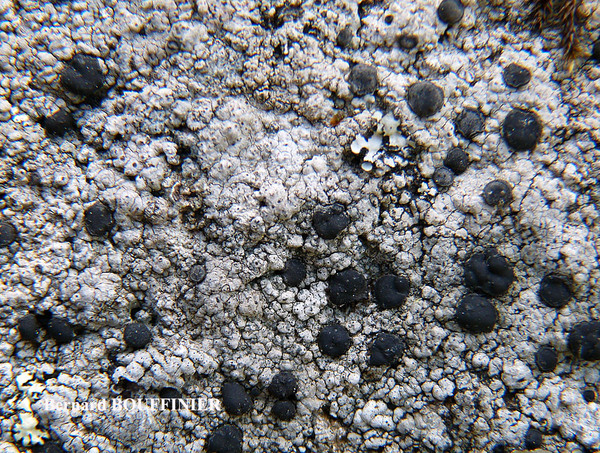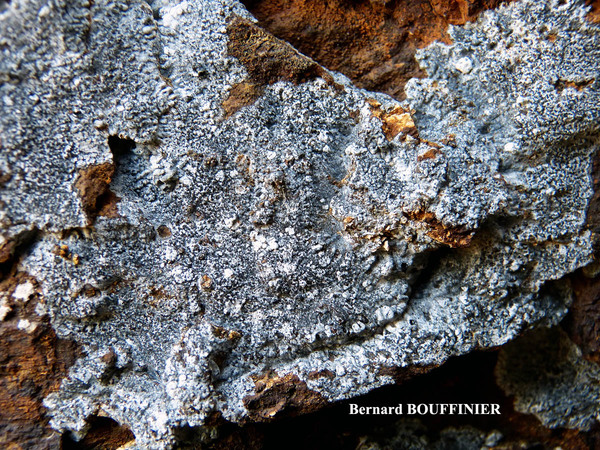Cecidonia xenophana (Körb.) Triebel & Rambold
Nova Hedwigia, 47: 291, 1988. Basionym: Placographa xenophana Körb. - Parerga Lichen.: 464, 1865.
Synonyms: Lecidea alumnula Nyl.; Lecidea dealbatula Nyl.; Lecidea deparcula Nyl.; Lecidea hymeneliicola Alstrup & D. Hawksw.; Lecidea subumbonata Nyl.; Lecidea subumbonella Lamy; Lecidea umbonella var. alumnula (Nyl.) Hertel; Nesolechia xenophana (Körb.) Vouaux
Distribution: N - Frl (Tretiach & Hafellner 2000, Brackel 2016). C - Sar (Brackel & Berger 2019).
Description: Thallus apparently crustose, often forming white to cream-coloured, gall-like, flattened to convex, up to 4 mm wide and up to 0.4 mm thick warts on silicicolous Porpidia-species. Medulla of the galls I-. Apothecia black, round to elliptical in outline, 0.2-0.3(-0.5) mm across, sessile, with a sometimes umbonate disc and a persistent, usually glossy black proper margin. Proper exciple up to 75 µm wide laterally, of irregular chains of swollen cells, carbonaceous black in outer part, paler brown within; epithecium pale olive-brown, up to 20 µm high; hymenium colourless, amyloid, 50-80 µm high; paraphyses coherent, branched and anastomosing, c. 2 µm thick at mid-level, the apical cells hardly swollen, up to 3 µm wide; hypothecium dark brown, 70-120(-300) µm high. Asci 8-spored, subcylindrical-clavate, the apex thickened, with a K/I+ pale blue apical dome usually with a distinct I+ blue, shallow subapical ring, Lecidea-type. Ascospores 1-celled, hyaline, ellipsoid, (9-)10-12(-13) x 5-6.5(-7.5) µm, without a perispore. Pycnidia black, c. 90 µm wide, the wall dark brown and conidia simple, hyaline, bacilliform, 5.5.-8 x c. 1 µm (these however may be the pyccnidia of the host). Photobiont apparently chlorococcoid, but the galls are most probably a reaction of the host thalli, the species being non-lichenized. Spot tests: those of the host lichens. Chemistry: probably without lichen substances.Note: an obligately lichenicolous fungus growing on the thalli of Porpidia-species; probably more widespread in the Alps, also known from the high Mediterranean mountains.
Growth form: Lichenicolous fungus
Substrata: rocks
Reproductive strategy: mainly sexual
paras Porpidia spp.
Commonnes-rarity: (info)
Alpine belt: very rare
Subalpine belt: rare
Oromediterranean belt: absent
Montane belt: very rare
Submediterranean belt: absent
Padanian area: absent
Humid submediterranean belt: absent
Humid mediterranean belt: absent
Dry mediterranean belt: absent
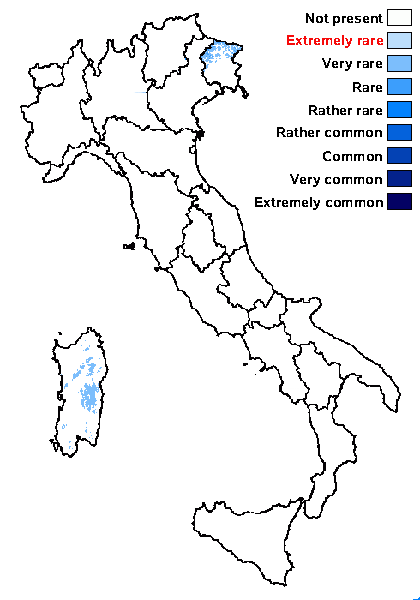
Predictive model
Herbarium samples

Michel David - Source: http://www.lichensmaritimes.org/index.php?task=fiche&lichen=1418&lang=en
France, sur Porpidia irrigua Pointe de Kerdra
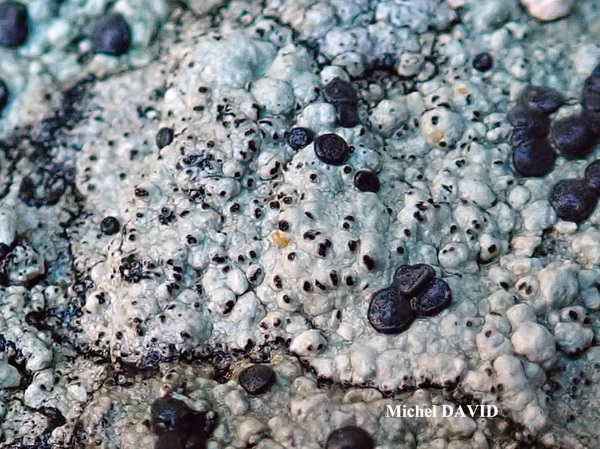
Michel David - Source: http://www.lichensmaritimes.org/index.php?task=fiche&lichen=1418&lang=en
France, sur Porpidia irrigua Pointe de Kerdra
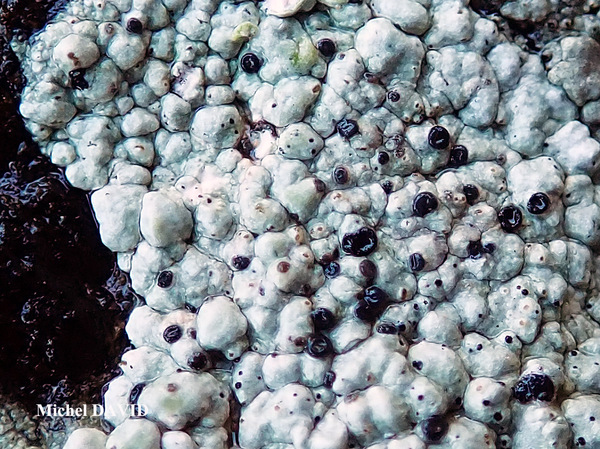
Michel David - Source: http://www.lichensmaritimes.org/index.php?task=fiche&lichen=1418&lang=en
France, sur Porpidia irrigua Pointe de Kerdra
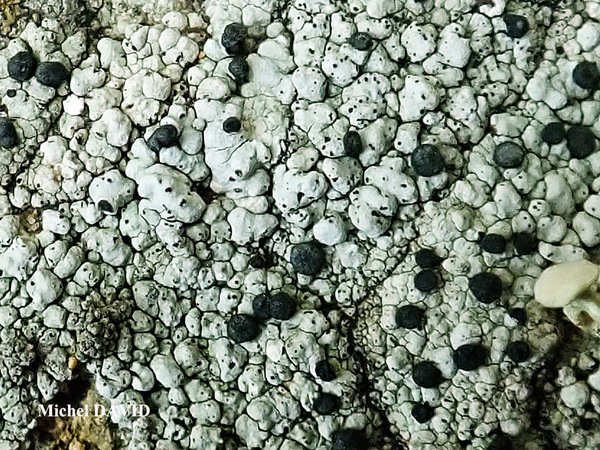
Michel David - Source: http://www.lichensmaritimes.org/index.php?task=fiche&lichen=1418&lang=en
France, sur Porpidia irrigua Pointe de Kerdra
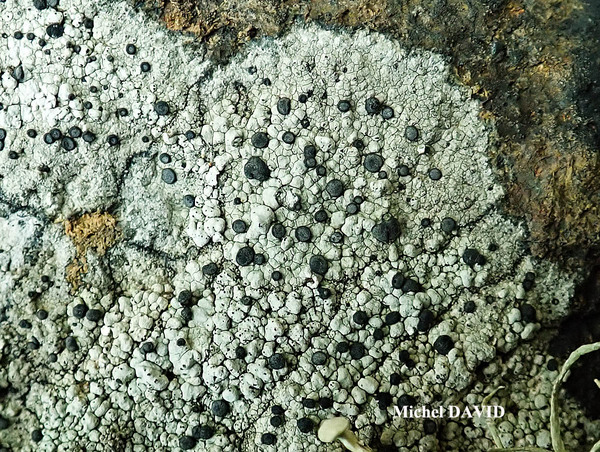
Michel David - Source: http://www.lichensmaritimes.org/index.php?task=fiche&lichen=1418&lang=en
France, sur Porpidia irrigua Pointe de Kerdra
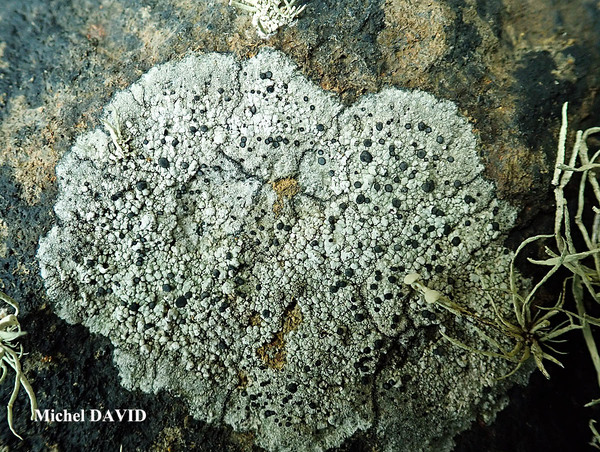
Michel David - Source: http://www.lichensmaritimes.org/index.php?task=fiche&lichen=1418&lang=en
France, sur Porpidia irrigua Pointe de Kerdra
Growth form: Lichenicolous fungus
Substrata: rocks
Reproductive strategy: mainly sexual
paras Porpidia spp.
Commonnes-rarity: (info)
Alpine belt: very rare
Subalpine belt: rare
Oromediterranean belt: absent
Montane belt: very rare
Submediterranean belt: absent
Padanian area: absent
Humid submediterranean belt: absent
Humid mediterranean belt: absent
Dry mediterranean belt: absent

Predictive model
| Herbarium samples |

Michel David - Source: http://www.lichensmaritimes.org/index.php?task=fiche&lichen=1418&lang=en
France, sur Porpidia irrigua Pointe de Kerdra

Michel David - Source: http://www.lichensmaritimes.org/index.php?task=fiche&lichen=1418&lang=en
France, sur Porpidia irrigua Pointe de Kerdra

Michel David - Source: http://www.lichensmaritimes.org/index.php?task=fiche&lichen=1418&lang=en
France, sur Porpidia irrigua Pointe de Kerdra

Michel David - Source: http://www.lichensmaritimes.org/index.php?task=fiche&lichen=1418&lang=en
France, sur Porpidia irrigua Pointe de Kerdra

Michel David - Source: http://www.lichensmaritimes.org/index.php?task=fiche&lichen=1418&lang=en
France, sur Porpidia irrigua Pointe de Kerdra

 Index Fungorum
Index Fungorum
 GBIF
GBIF
